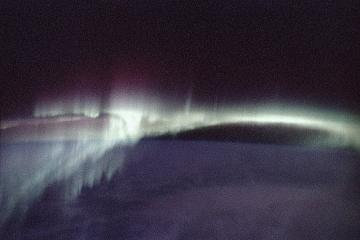In a nutshell, it is really tough! The higher you go, more bad things can happen to you… the increasingly rarefied air, freezing temperatures, ionized atoms, radiation, and space debris make life challenging. So, besides thinking of how to place spacecraft in orbit, engineers must consider all of the factors mentioned above (and much more) when designing a spacecraft.
The space environment (the vacuum, the radiation, the space debris, etc.) definitely poses big challenges to spacecraft design engineers. From 1971 to 1989, more than 2,700 spacecraft anomalies related to interactions with the space environment were recorded. These interactions with the space environment are called space environment effects and the changes in the space environment define what is called the space weather. Believe it or not, there are dedicated programs aimed at developing the ability to predict these changes in the same way the weather forecasting does for terrestrial weather. The Space Weather program was formed in the mid-1990s by the National Science Foundation (NSF). The Europeans developed a similar program under the umbrella of the European Space Agency (ESA).
The space environment effects can be grouped into several categories. Such categories include: vacuum, neutral, plasma, radiation, and micrometeorid/orbital debris. So, basically, we can discuss the effects of the vacuum environment, the neutral environment, etc. Each one of these environments interact with the subsystems that comprise a spacecraft: the propulsion system that provides the means of maintaining a certain orbit or attitude, the electrical power system that provides power to the rest of the subsystems onboard, the thermal control system, the attitude and orbital determination and control system, etc.
The vacuum environment imposes challenges when it comes to designing the structure, choosing the materials, and defining a strategy for thermal control. The pressure differential between the inside and the outside of a manned spacecraft is tremendous (around 350 km above the surface of the Earth, the pressure is ten orders of magnitude less). The lack of atmosphere translates into the fact that the spacecraft will have to deal with solar ultraviolet (UV) radiation (the UV radiation is energetic enough to degrade material properties). Also, the spacecraft can only cool itself by conduction or radiation.
Even if very rarefied, the neutral atmosphere in low Earth orbit is dense enough to cause a significant atmospheric drag force. The atoms can physically sputter material from surfaces and even cause erosion. All these mechanical and chemical interactions depend on the atmospheric density.
In low Earth orbit, the solar UV radiation ionizes the oxygen and nitrogen atoms. This environment, known as the plasma environment, can give rise to very interesting effects, like spacecraft charging and arcing between regions of differing potentials.
By far, the most dangerous environment in Earth orbit is the radiation environment. In the regions of charged particles, known as trapped radiation belts, particles with energy levels in the order of MeV pass through the surface layer and interact with the materials inside the spacecraft. Present shielding technology cannot protect living organisms inside a spacecraft in these regions.
Micrometeoroids and orbital debris are a cause of great concern to spacecraft design engineers and spacecraft operators as the kinetic energies associated with impacts at orbital velocities are very high. The main effect on spacecraft in this case is the physical damage upon impact. Other effects include surface erosion, ejecta resulted from impacts, changes in thermal control properties, and generation of electro-magnetic impulses (EMIs).
As most of the characteristics of the space environment were determined by remote observations or during short duration missions, one long duration mission was necessary to verify and validate these measurements.
In April 1984, the Space Shuttle Challenger placed into low Earth orbit (LEO) a spacecraft carrying a number of experiments for the purpose of characterizing the low Earth orbit environment. The spacecraft (known as the Long Duration Exposure Facility, or LDEF for short) was a twelve-sided cylindrical structure three-axis stabilized in order to ensure an accurate environmental exposure. The spacecraft was supposed to spend one year in orbit, but just before the planned retrieval, the Space Shuttle fleet was grounded as a result of the Challenger accident on January 28, 1986.
The spacecraft was returned to Earth by the Space Shuttle Columbia in January 1990. After almost six years in low Earth orbit, the results of the experiments onboard the facility contributed a great deal to the understanding of interactions between artificial objects and the environment in low Earth orbit.
You can find all the above in much more detail in Alan Tribble’s book The Space Environment – Implications for Spacecraft Design. Alan Tribble presents an excellent account of the effects the space environment can have on operational spacecraft. The book offers a unique perspective, as it combines the study of the space environment with spacecraft design engineering. .












 Subscribe to our RSS feed
Subscribe to our RSS feed











There are no comments.
Add A Comment